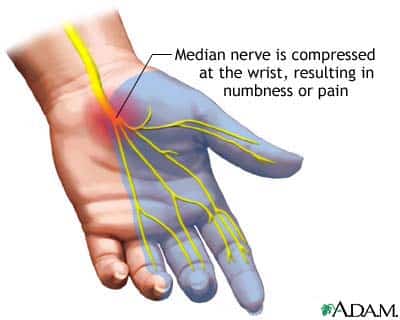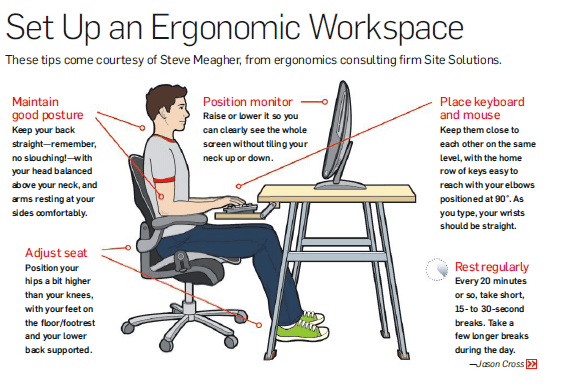Carpal Tunnel Syndrome is a case where you experience hand pain, numbness and tingling in the hand and arm which is caused by pressure on the median nerve. The median nerve and several tendons run from your forearm to a small space called the carpal tunnel in your wrist. The nerve provides feeling in the thumb and index, middle, and ring fingers. The nerve also controls the muscles around the base of the thumb. The nine tendons that bend the fingers and thumb also travel through the carpal tunnel. These tendons are called flexor tendons.
Carpal Tunnel Syndrome
What is Carpal Tunnel Syndrome?
What Causes It?
Repetitive Wrist Movements
Sleeping With Your Wrist In A Bent Position For Prolonged Hours
Conditions Such As Diabetes, Rheumatoid Arthritis, And Hyperthyroidism
Trauma From A Dislocation Or A Fracture To The Wrist Or Hand (Less Common)
Pregnancy, As It Can Influence Fluid Levels In The Body
Heredity, the carpal tunnel may be smaller in some people or there may be anatomic differences that change the amount of space for the nerve

Symptoms
- There a few signs to look for with Carpal Tunnel Syndrome:
- Pins and needles in your hand and fingers – primarily in the thumb and index, middle, and ring fingers
- Pain or tingling that may travel up the forearm toward the shoulder
- Hand weakness – dropping objects easily due to weakness, numbness, or a loss of proprioception (awareness of where your hand is in space)
- Hand pain predominantly in the morning or at night.
- Hand Numbness.
Note: Symptoms most often occur in your index finger, middle finger, ring finger and thumb.

Treatment
You can treat mild symptoms with the methods below:
- Stop the aggravating activities and rest your hand between activities.
- Ice your wrist for 10-15 minutes every 3-4 hours.
- Non-prescription anti-inflammatory medications help control pain and swelling.
- Joint Manipulation
- Kinesio Taping
- Manual Therapy
- Dry Needling
- Stretching Exercises
- Strengthening Exercises
- Nerve Gliding Exercises.
- Ultrasound
- Transcutaneous electrical nerve stimulation (TENS)
- Wear a wrist splint at night, which can help take the pressure off the median nerve while you sleep. Check out the wrist brace we recommend in our SHOP.
If symptoms are severe or mild symptoms persist for more than one week, you should get your wrist assessed and treated by a Physiotherapist and/or GP. In severe cases, surgery is advised and it is a very successful procedure. The sooner carpal tunnel syndrome is treated, the better the outcomes.

Prevention
- If you have a desk job, try to keep your wrist in a neutral position when typing.
- If you do repetitive work alternate which hand you use.
- Grip objects with your hand and not just your fingers.
- Break bad habits of smoking and incorporate a healthy diet to reduce weight.
Exercising for 30 minutes three or four times a week maintains muscle flexibility and improves blood flow.
How is Carpal Tunnel Syndrome Diagnosed?
A Physiotherapist or GP will ask about your medical history (if you have Arthritis or Hyperthyroidism). The Physiotherapist or GP will ask if you recently hurt your wrist, arm, or neck. He/She will also ask about your daily routine and what kind of job you have. They will then check your sensation, strength and carry out a physical examination of your wrist, elbow, shoulder and neck. Your GP may refer you to have blood tests and/or a nerve conduction test.

New Client Offer - 10% OFF
Are you in pain? Not sure if we can help you?
Book your initial appointment and receive 10% off any service!